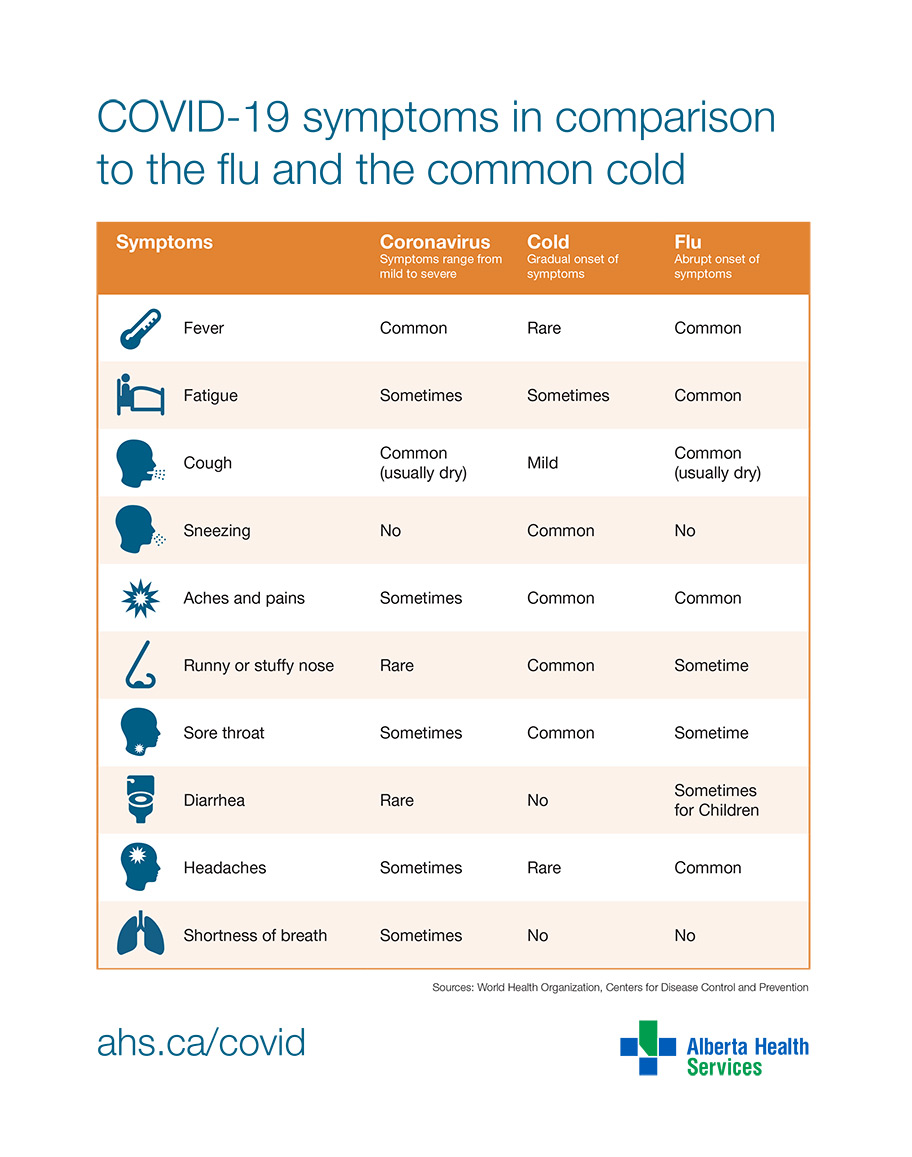COVID-19 has changed our definition of normal many times this year — and flu season is no exception. Unlike COVID-19, we’ve dealt with the flu before. Still, the many similarities shared by COVID-19 and the flu can make it confusing to diagnose symptoms and may leave you questioning how you can best protect yourself.
Staying informed is one of the best ways to take control of your health and protect yourself against misinformation. We put together this list of essential information to clear up the difference between the flu and COVID-19.
The basics of COVID-19 and the flu
Both COVID-19 and influenza viruses cause respiratory disease, which can present itself in illnesses that range from asymptomatic or mild to severe. However, they are caused by different viruses —COVID-19 is caused by a new virus called SARS-CoV-2, while influenza is caused by the influenza A and B viruses.
How it spreads
Both viruses are spread by person-to-person contact and through droplets (spread when people cough, sneeze or talk) that can land in the mouths or noses of nearby people who would then be exposed.
COVID-19 is more contagious than the flu. There have also been more “super-spreading” events with COVID-19 than the flu. A super-spreading event is where a small number of highly contagious individuals transmit the disease to a large number of previously uninfected individuals.
Symptoms
COVID-19, the flu and the common cold all share similar symptoms, but there are some differences to note.

When do symptoms appear?
It can take one or more days between the time a person becomes infected and when they start to experience symptoms for both COVID-19 and the flu. Usually, it would take longer for a person with COVID-19 to show signs of symptoms (as early as two and as late as 14 days, with five days being the average).
How long are people contagious?
Both viruses can be spread for at least one day before you experience any symptoms, but people with COVID-19 are usually contagious for longer periods of time. Experts are still investigating how long someone can spread COVID-19 once they are infected. It’s possible the virus can spread for two days before you experience any symptoms and you can stay contagious for at least 10 days after those symptoms appeared. If someone is asymptomatic (no symptoms at all) or the symptoms go away, you can still be contagious for 10 days after a positive COVID-19 test.
Complications
COVID-19 and the flu can lead to complications like pneumonia, respiratory failure, fluid in lungs (acute respiratory distress syndrome), cardiac injury and even death. We know that the majority of people who get either the flu or COVID-19 recover, but severe cases of COVID-19 are more common than severe flu cases. As well, COVID-19 can cause additional complications like blood clots in veins and arteries of the lungs, heart, legs or brain, and multisystem inflammatory syndrome in children.
Prevention
The good news is that many of the tactics we are using to protect ourselves against COVID-19 can also protect us from the flu such as:
- Getting your flu shot
- Getting the flu vaccine will NOT protect against COVID-19, but there are many benefits to getting immunized
- Immunization has been shown to reduce the risk of flu illness and hospitalization
- With more people safe from the flu, healthcare workers can focus on caring for patients with COVID-19 and other critical illnesses
- Washing or sanitizing your hands
- Wearing a mask
- Continuing to practice physical distancing
- Avoiding large events and mass gatherings
- Avoiding touching your eyes, nose and mouth
- Coughing and sneezing into a tissue, not your hands
- Isolating if you have symptoms of the flu or another respiratory virus
Dr. Susy Hota, Medical Director of Infection Prevention and Control at UHN says, “It’s not flu vs. COVID-19, it’s us vs. the viruses!” We all have a role to play to keep not only ourselves but each other safe this flu season. Click here for more information from UHN on COVID-19 and the flu.
Sources:
- https://www.mayoclinic.org/diseases-conditions/coronavirus/in-depth/coronavirus-vs-flu/art-20490339
- https://www.cdc.gov/flu/symptoms/flu-vs-covid19.htm
- https://www.who.int/emergencies/diseases/novel-coronavirus-2019/question-and-answers-hub/q-a-detail/q-a-similarities-and-differences-covid-19-and-influenza?gclid=EAIaIQobChMI4v3g8IDa6wIVBq_ICh3RsgZbEAAYASAAEgLdnvD_BwE
- https://www.albertahealthservices.ca/assets/info/ppih/if-ppih-covid-19-flu-cold.pdf
- https://www.uhn.ca/corporate/News/Pages/UHN_Flu_Campaign_2020_kicks_off.aspx
- https://guides.hsict.library.utoronto.ca/c.php?g=716817&p=5139348


